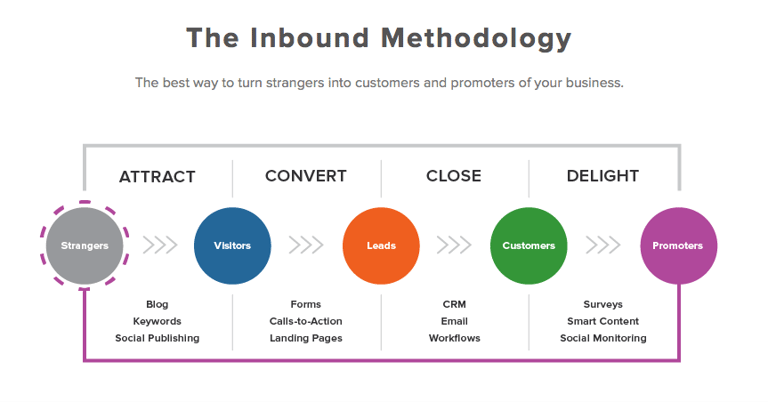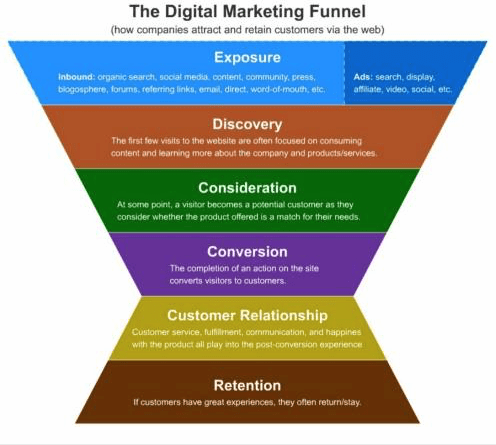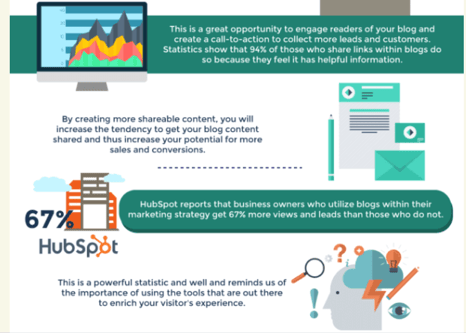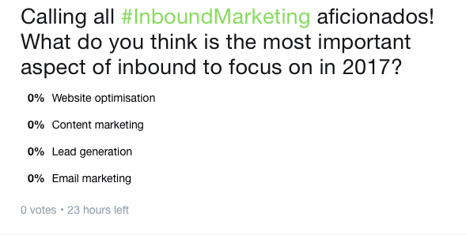Every great content marketing strategy begins with a blog.
Indeed, blogging is at the forefront of inbound marketing. Your blog posts are where the whole cycle begins.
In the first instance, your blog posts will lure strangers to your website, from where you can ply them with more great free content offers (eBooks, case studies, white papers etc.), for which your prospective customers will give up their email address in exchange for access. With the email address captured, you can then begin to send personalised messages to your leads, nurturing them along the path to purchase when they will become brand new paying customers.
This is the inbound marketing methodology in a nutshell – illustrated in the infographic below – and it all begins with a humble blog post.

(Image source: hubspot.com)
The Cycle Continues
But blogging isn’t just a top-of-the-funnel (ToFU) activity. In fact, blogs play an important role at the middle and bottom of the funnel, too.
MoFU Blogging
Mid-funnel prospects are those leads that have trickled down from your eye-catching top-of-the-funnel content. Your content marketing strategy at this point in the process is to guide these prospects through the buyer’s journey, providing them with material that will help them develop a trust and an affinity for your brand over your competitors.
High-value downloads play an important role at this stage, for sure – but so does your blog. What you need to be doing is using your blog to educate your MoFU prospects about the factors that differentiate your brand from all the others. What’s more, your blog also needs to be inspiring emotional connections with your audience at this stage – for this, ultimately, is what will draw them to make an eventual purchase.
BoFU Blogging
Blogging continues to play a crucial role at the bottom of the funnel. Here, your leads have converted into customers – and your job now is to retain them and turn as many as you can into evangelists.
The continuous offer of free content is where this added value will come from. Your blog posts that target BoFU customers should be filled with plenty of useful information that will encourage them to make repeat purchases, and remind them of why you’re such a great company to be doing business with. In short, they need to nurture the post-purchase experience.
This is retention marketing, the concept of which has led some commentators to the conclusion that the sales funnel is not funnel-shaped at all, but hourglass-shaped – like this…

(Image source: business2community.com)
Blogging Is Great for Business
So, blogging holds pride of place at every stage of your content marketing strategy. And so it should – for blogging drives results.
HubSpot research has found that business owners that build regular blogs into their inbound marketing campaigns generate 67% more leads and views than those that don’t. What’s more, the average company with a blog gets 97% more inbound links than companies without, and websites with a blog have 434% more indexed pages.

(Image source: tech.co)
How to find Blog Titles for your Content Marketing Strategy
The importance of blogging, it is clear, cannot be underestimated.
What is also clear, however, is that you’re going to need to come up with a lot of blog post ideas to form a solid content marketing strategy that will take your prospects and customers on a continuous journey with you as a brand.
Here, we’ve put together a list of five ideas to help you brainstorm blog titles.
1. Consult Your Social Following
Yes – this goes right at the top of the list, as it one of the best ways to generate ideas for your ToFU blog content. Why? Because your social media following is your ToFU audience.
Twitter is a great place to ask the question. However, it will pay to be a little more subtle than simply asking your network “What do you want [Your Company Name] to write about?”
Rather, ask them what (industry relevant) topics they’re interested in. You could even create a Twitter Poll for the purpose – offering a multiple choice of topics for your following to choose from.
Here’s an example we mocked-up quickly to show you what we mean.

2. Ask Your Sales Team What Prospects Need to Know
One of the main purposes of blogging is to educate your prospects so that they are as fully-informed as possible about your product or service when the time comes for a sales call.
In many ways, this means that your content almost acts as a sales rep – only that prospects are educating themselves, as opposed to the actual rep. However, there is almost bound to be some holes in your content offering – key information that your prospects need to know, but as yet can’t find an answer for on your website.
Your sales team will know what questions most often pop-up in the conversations that they have with prospects. Find out what these are, and you’ll have a list of MoFU topics to cover in blog posts.
3. Consult Your Customer Support Team, Too
Your sales team will know what’s tripping up your MoFU prospects – your support team, on the other hand, will know the pain-points that your existing customers are facing.
Remember, one of the main purposes of blogging is to address the problems that your audience is having. Talk to Customer Support, and you’ll soon be generating a ton of BoFU blog post ideas that will tell your valued customers exactly what they need to know.
4. Check Out What Industry Influencers Are Talking About
Another important factor of blogging is to keep your brand image up-to-date and relevant.
No matter what industry you’re in, there will be a list of important commentators and influencers shaping trends and discussions on social media.
You can identify these “celebrity” types using online tools such as Traackr, Buzzsumo and followerwonk. Study what they’re talking about and join the conversation with a series of insightful blog posts.

(Image source: traackr.com)
5. Mine Your Competitors’ Content
The competitors that you most need to worry about are those that are firing on all cylinders with a content marketing strategy of their own.
It will always pay to keep a beady eye on their output, not only so you know what you’re up against, but also to find out what topics are proving to be most popular for them – the chances are, they’ll be just as popular for you, too.
And while you’re at it, consider what they’re not talking about. As well as replicating your competitors’ “wins”, you should try and identify where the gaps are – and fill them. Covering topics that no one else in your industry is yet talking about is sure to put your blog on the map – the pieces of content that you create will become definitive, and sure to attract a lot of attention and links.
Over to You
Blogging is the cornerstone of inbound marketing. It’s used at every stage of the marketing funnel, and the simple truth is that you can never have too much blog content on your site. Developing a solid content marketing strategy is the name of the game, and indeed, coming up with a strong list of titles can often be the hardest part of the process. Spend a few hours on it today, and you’ll be set for many weeks to come.
If you need help with your content marketing strategy, then please don’t hesitate to get in touch with the inbound marketing experts here at Incisive Edge today.









